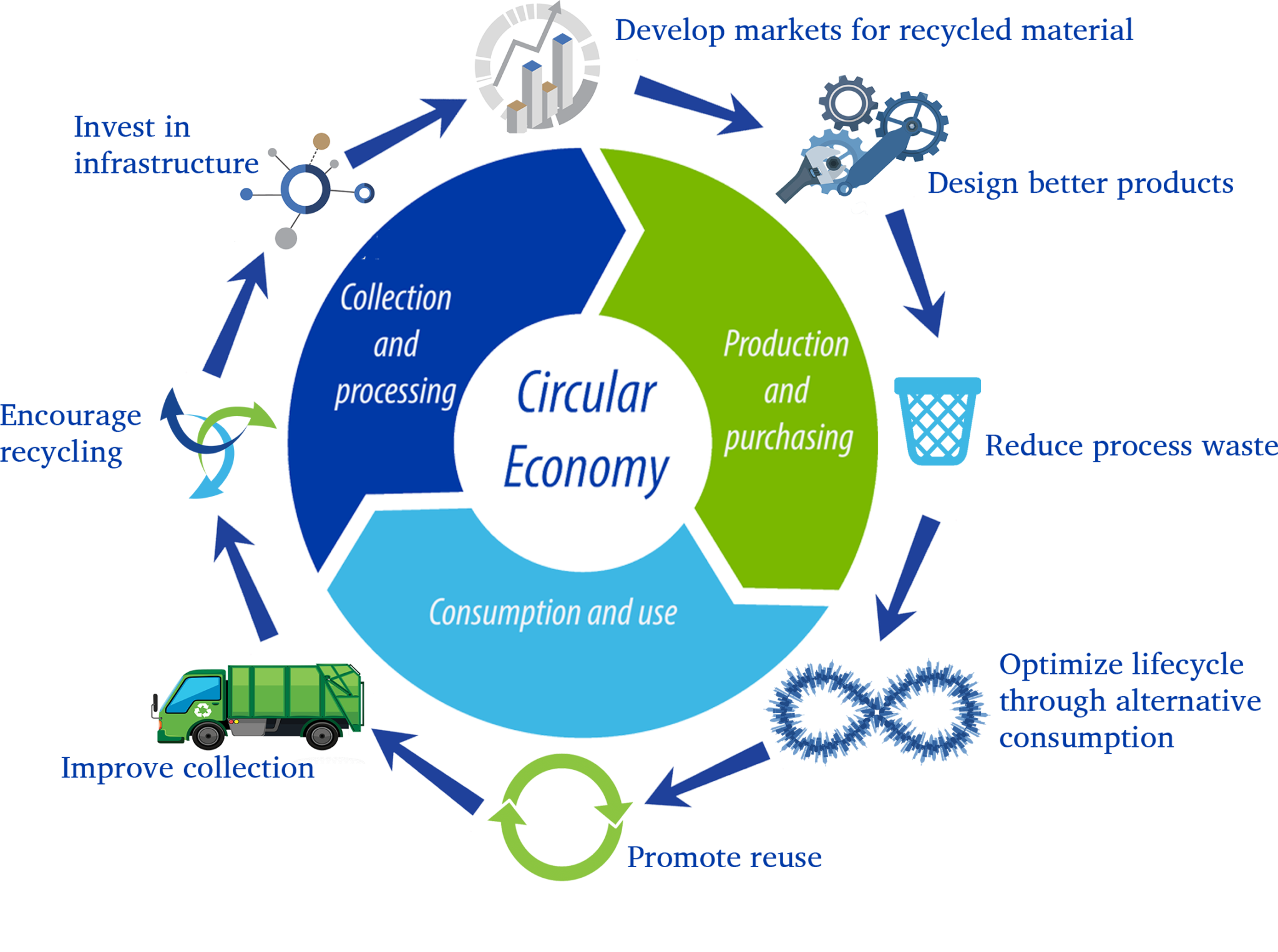The circular plastic economy is a model in which plastic materials are kept in use for as long as possible, with the goal of minimizing waste and reducing the negative impacts of plastic on the environment. In a circular plastic economy, plastic is designed, used, and managed in a way that maximizes its value while minimizing its environmental footprint.
There are several key elements of a circular plastic economy:
1. Design for circularity: This means designing plastic products and packaging with the goal of maximizing their reuse, repair, and recycling potential. This can involve using materials that are easier to recycle, designing products that are easy to disassemble and repair, and using materials that are compatible with existing recycling systems.
2. Reduce single-use plastic: Single-use plastic, such as plastic bags and straws, is a major contributor to plastic pollution. Reducing the use of single-use plastic can help to minimize waste and reduce the environmental impacts of plastic.
3. Increase plastic recycling: Recycling is a key element of a circular plastic economy. By increasing the amount of plastic that is recycled, we can keep plastic materials in use for longer and reduce the need to extract and process new raw materials.
4. Increase plastic reuse: Reusing plastic products, such as by refilling containers or using durable, long-lasting products, can help to keep plastic in use for longer and reduce waste.
5. Develop new technologies: New technologies, such as chemical recycling and biodegradable plastics, can help to improve the sustainability of the plastic industry and reduce the environmental impacts of plastic.
To achieve a circular plastic economy, it is important to have a combination of individual actions, such as reducing plastic waste and increasing recycling, as well as policy changes at the local, national, and global levels. This can include supporting policies that encourage the design of circular plastic products, increasing funding for research and development of new technologies, and implementing regulations to reduce the use of single-use plastic.
Got a question?
Let’s discuss on our Facebook community of sustainability experts and enthusiasts helping us to build the future of plastic recycling.
Let’s go circular together!

